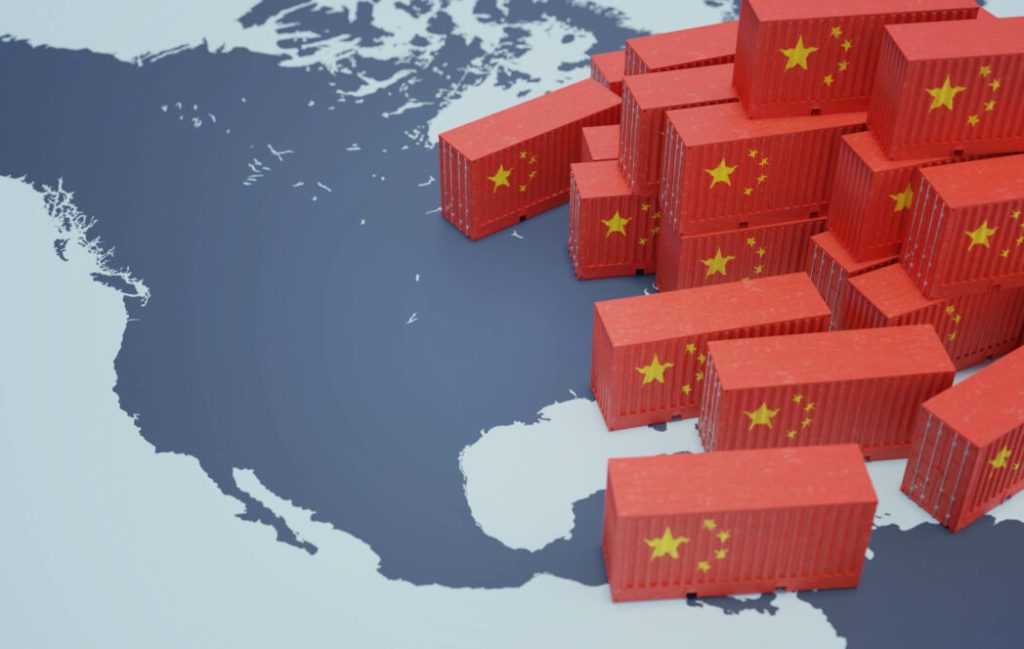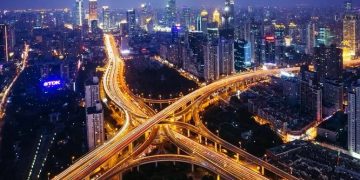Introduction
In recent years, the global trade landscape has undergone a significant transformation, largely driven by the intensifying rivalry between major world powers, most notably the United States and China. These two giants have been engaged in a trade war, marked by tariffs, sanctions, and shifting alliances. Meanwhile, other emerging economic powers, such as the European Union, India, Russia, and even regional players like Brazil, are increasingly asserting themselves on the global stage.
As the competition among these powers intensifies, there is growing speculation about the future structure of the global trade system. One possibility is the emergence of a multipolar global trade order, in which no single nation or bloc dominates global commerce. Instead, several major players with distinct economic, political, and trade systems could share influence over the direction of global trade.
This article explores the dynamics contributing to the potential for a new multipolar order in global trade, the forces driving this change, and the possible consequences for countries, businesses, and the global economy as a whole.
1. The Current Global Trade Landscape
To understand the possibility of a new multipolar trade order, it is essential to examine the current state of the global trade system. Historically, the world has been characterized by a unipolar or bipolar trade structure, where one or two dominant economic powers have influenced trade rules, norms, and practices.
- The Unipolar Era: After the Cold War, the United States emerged as the dominant global economic superpower, shaping much of the international economic system. The U.S.-led Bretton Woods system established international financial institutions like the International Monetary Fund (IMF) and the World Bank, with the U.S. dollar as the global reserve currency.
- The Bipolar Shift: By the early 21st century, China’s meteoric rise as an economic power began to challenge U.S. dominance. China’s entry into the World Trade Organization (WTO) in 2001 marked the start of a more competitive, albeit cooperative, relationship between the U.S. and China. China’s integration into the global trade system propelled it to become the world’s second-largest economy, with its manufacturing sector becoming the backbone of global supply chains.
However, in recent years, the growing tensions between the U.S. and China, particularly in the context of trade wars, technological competition, and geopolitical struggles, have increasingly signaled the end of the bipolar global trade system.
2. The Rise of Great Power Rivalry
The trade war between the U.S. and China, alongside the economic nationalism that has gained traction in various parts of the world, has caused significant disruptions to the global trade order. The main drivers behind the rise in great power rivalry include:
a. U.S.-China Trade War
The U.S.-China trade conflict, which began in 2018, marked a significant turning point in the global trade environment. The two countries imposed tariffs on hundreds of billions of dollars’ worth of goods, leading to disruptions in supply chains, increased costs for businesses, and a rethinking of how global trade operates.
- Economic Decoupling: The trade war has led to the idea of “economic decoupling,” where the U.S. and China seek to reduce their interdependence. This decoupling is not limited to trade but extends to technology, investment, and even cultural exchanges. The creation of competing economic spheres has the potential to fragment the global trade system into distinct blocs.
- Shift in Trade Patterns: As the trade war intensified, businesses began seeking alternative markets to mitigate risk. Countries in Southeast Asia, Latin America, and even parts of Africa have benefitted as companies look to diversify their supply chains away from China and the U.S. This reorientation of trade flows is a key sign of a multipolar trade world taking shape.
b. Growing Economic Nationalism
Alongside the U.S.-China trade conflict, economic nationalism has become more pronounced in many countries. Populist governments in the U.S., Europe, and even parts of Asia have pursued policies that prioritize national interests over global cooperation. This trend is evident in:
- Brexit: The United Kingdom’s decision to leave the European Union is a direct manifestation of economic nationalism. By regaining control over its trade agreements and borders, the U.K. has sought to establish a more independent trade policy that no longer relies on EU rules.
- “America First”: The U.S. under President Donald Trump pursued an “America First” trade policy that focused on reducing trade deficits, renegotiating trade agreements, and imposing tariffs on foreign goods. This approach has influenced other countries to adopt similar protectionist measures.
- India’s “Atmanirbhar Bharat”: India has also embraced an economic nationalism approach with its “self-reliant India” policy, which encourages the development of domestic industries and discourages over-reliance on foreign imports. This could further challenge the existing trade order by promoting India as a more self-sufficient global power.
c. The European Union as an Economic Bloc
The European Union (EU), despite internal challenges such as Brexit, continues to be an economic powerhouse. The EU’s integrated economy allows it to compete as a major bloc in the global trade arena.
- EU Trade Agreements: The EU has aggressively pursued free trade agreements with countries around the world, from Mercosur in South America to Canada and Japan, positioning itself as an alternative center of global commerce to both the U.S. and China.
- Green Trade: The EU’s commitment to sustainability is pushing it to become a leader in the transition to a greener economy. The European Green Deal aims to make Europe climate-neutral by 2050, and its emphasis on green trade policies could shape future trade norms and rules.
3. The Shift Towards a Multipolar Global Trade System
Given the ongoing shifts in global power dynamics, it is likely that the world will increasingly embrace a multipolar trade system, where multiple regions and countries exert influence over the direction of global trade.
a. China’s Ambitions
China’s Belt and Road Initiative (BRI), launched in 2013, is a critical component of its strategy to reshape the global trade system. The BRI seeks to build infrastructure and foster trade connectivity between China and countries across Asia, Africa, and Europe, with the goal of enhancing China’s economic influence. The Chinese government has also been making strides to internationalize the renminbi as a global currency, which could weaken the U.S. dollar’s dominance in global trade.
b. India as a Rising Trade Power
India, with its large population, growing economy, and increasing trade agreements, is positioning itself as a key player in the global trade landscape. India’s status as a member of several trade blocs and its efforts to enhance its digital economy make it an important partner for global trade.
- India’s Trade Policy: India’s growing market and efforts to boost local industries under the “Make in India” initiative are attracting more foreign investment. Additionally, India is working to secure trade agreements with the EU, Australia, and the U.S., further consolidating its position in the global economy.
c. Regional Trade Blocs
The rise of regional trade blocs further supports the idea of a multipolar trade world. As nations seek to reduce reliance on external powers, they are increasingly engaging in regional partnerships to facilitate trade. Examples include:
- **The Regional Comprehensive Economic Partnership (RCEP): The RCEP, a trade agreement involving 15 Asia-Pacific countries (including China, Japan, South Korea, and ASEAN members), has created one of the world’s largest free-trade areas, representing about one-third of the global economy.
- **The African Continental Free Trade Area (AfCFTA): The AfCFTA aims to create a single continental market for goods and services across Africa, which could become a significant trading bloc in the coming years.

4. Consequences of a Multipolar Global Trade System
A shift toward a multipolar global trade system could have several important consequences:
a. Increased Competition and Fragmentation
A multipolar system could lead to increased competition among major trade blocs and regional powers. With multiple competing centers of economic power, there could be a fragmentation of global supply chains, as companies are forced to adapt to new standards, regulations, and tariffs.
b. Trade and Currency Shifts
As regional powers like China, India, and the EU gain influence, we could see a diversification of trade currencies. The dominance of the U.S. dollar in global trade might be challenged, with the rise of the Chinese renminbi and the Euro in international transactions.
c. New Opportunities for Developing Countries
A multipolar world could provide opportunities for developing countries to engage with multiple trade partners and increase their exports. However, these nations may also face challenges in navigating the complex web of trade rules and standards across different blocs.
5. Conclusion
The intensification of great power rivalry, coupled with the rise of new economic powers, is pushing the global trade system toward a more multipolar structure. As the U.S., China, India, and the EU assert their influence, the future of global trade will likely be characterized by competing trade blocs and a more fragmented supply chain network.
For businesses and governments, this shift will require greater adaptability and strategic foresight. Navigating a multipolar trade environment will demand a deeper understanding of regional dynamics, new trade agreements, and an evolving global economic order. Ultimately, the emergence of a multipolar trade system represents both challenges and opportunities as the world moves towards a more diversified and complex economic future.


















































